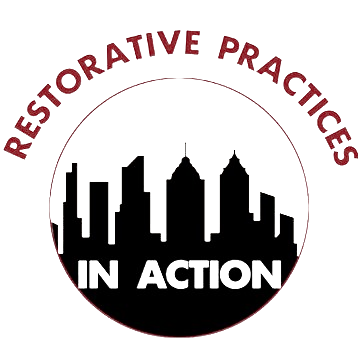DATE
July 11, 2025
AUTHOR
Claire Miller
CATEGORIES
Restorative Practices
SHARE
Student reflection is a key component of a restorative classroom culture. From reflection questions to restorative conversations to peace circles, it is shown in a multitude of studies that the more a student reflects on their choices, the more likely they are to grow in their sense of ownership as a member of the class community1.
Oftentimes, however, these reflection activities happen before or after day to day instruction. Teachers need restorative student reflection strategies that can be integrated right into their lesson plans; the activity below is one of those strategies!
The restorative practice below, called Leadership Stands, is an effective and efficient way to cultivate student ownership in the learning process. This interactive strategy can be used at any point during small group instruction, and it creates space for students to see themselves and their peers as unique leaders who make an impact on the learning of their classmates.

Leadership Stands Strategy
Class Time: 5 – 8 minutes · Materials Needed: None
Step 1: Small Group Activity Creation
You should first create a small group activity but it should be one without group roles or jobs.
The activity you pick to pair with the Leadership Stands strategy should be one that is short and clear: what learning activity can your students complete as a group in less than 10 minutes that ends with a clear product?
This lack of group roles will give students space to organically interact with each other, and it will also give you a chance to see how your students are progressing as leaders in your room. How do they structure their own space? How do they interact with each other when you don’t tell them how to act?
Step 2: Focus on “The Who”
Once you present the activity, explain to the students that you purposefully took out any student group roles or jobs. Rather than defined roles for each group member, each student is asked to consider who they want to be in the group and who they are in the group as the activity unfolds. If helpful for your students, let them know they will reflect on their role in the group after the activity.
Step 3: Evaluate the Leadership Stand Statements
The Leadership Stand Statement is an effective tool to help students build ownership and understand that they have unique leadership skills to share with others.
| Leadership Stand Statement | Question for 1 or 2 Students Who Stand Up |
|---|---|
| Stand if you started the conversation with your group | Why did you start the conversation? |
| Stand if you invited another student in your group to share their thoughts | What did you learn from the student you invited into the conversation? |
| Stand if you asked your group a question | What question did you ask and why? |
| Stand if you encouraged a group member | What was the impact of your encouragement? |
| Stand if you played ‘devil’s advocate’ or pushed back on a group member’s idea | How did your dissent impact the group or change the outcome of the activity? |
| Stand if you connected your idea to another group member’s idea | What connection did you make and why was it important for you to share this connection? |
| Stand if you redirected one or more group members to focus on the activity | How did it feel to be the student in the group who redirected another group member? |
| Stand if you would like to give a positive shout out to a group member | Who would you like to shout out and why? |
| Stand if you have not yet stood for a statement | What role did you play in your group and why? |
When used over time, this reflection strategy builds student ownership for both themselves and their classmates and demonstrates a range of skills that students use and bring to a group. The student who initiates conversation, the student who listens before connecting, and the student who encourages a struggling classmate are all valuable leaders in the learning community: this restorative practice restores that belief in all students.
1 Cavilla D. The Effects of Student Reflection on Academic Performance and Motivation. SAGE Open. July 2017. doi:10.1177/2158244017733790


